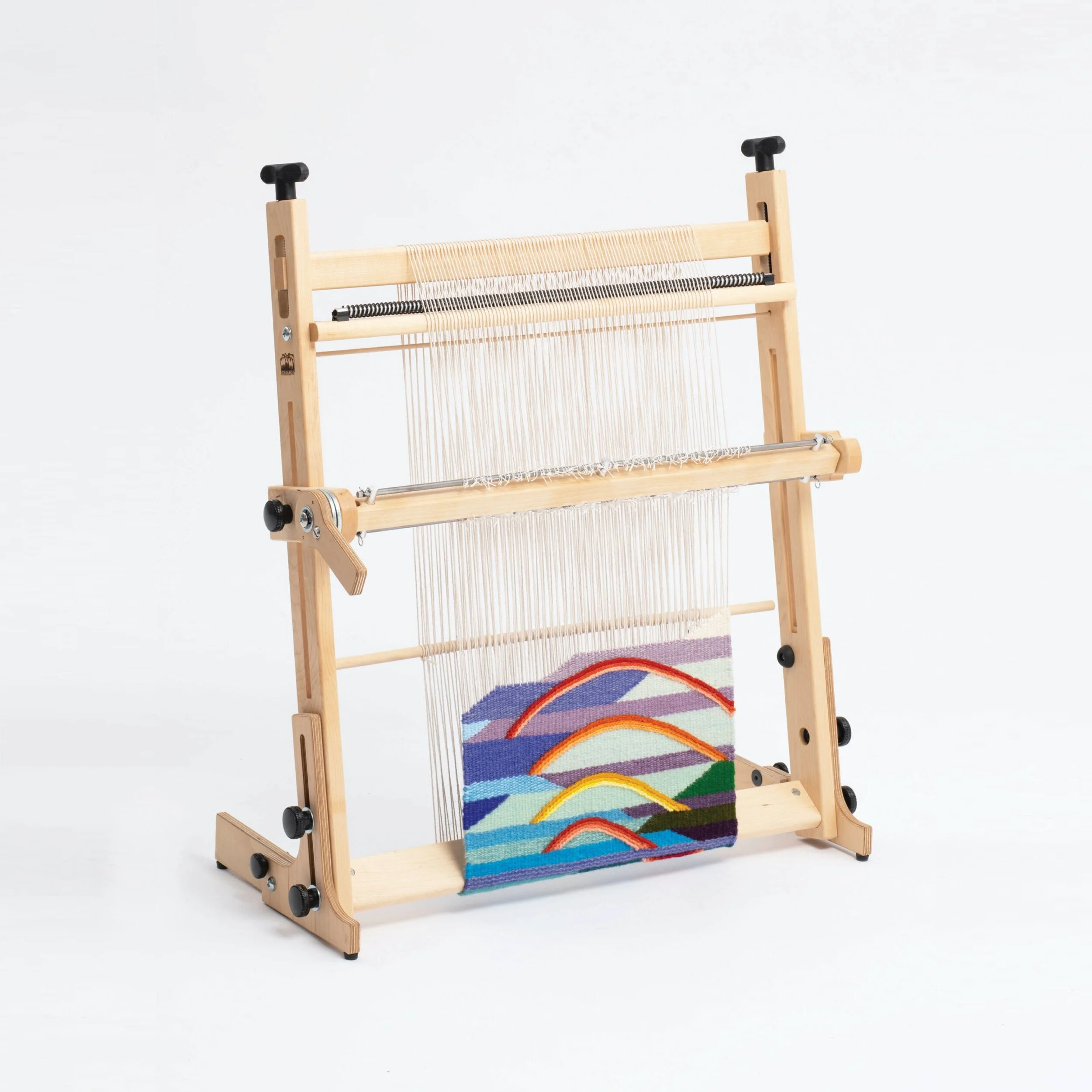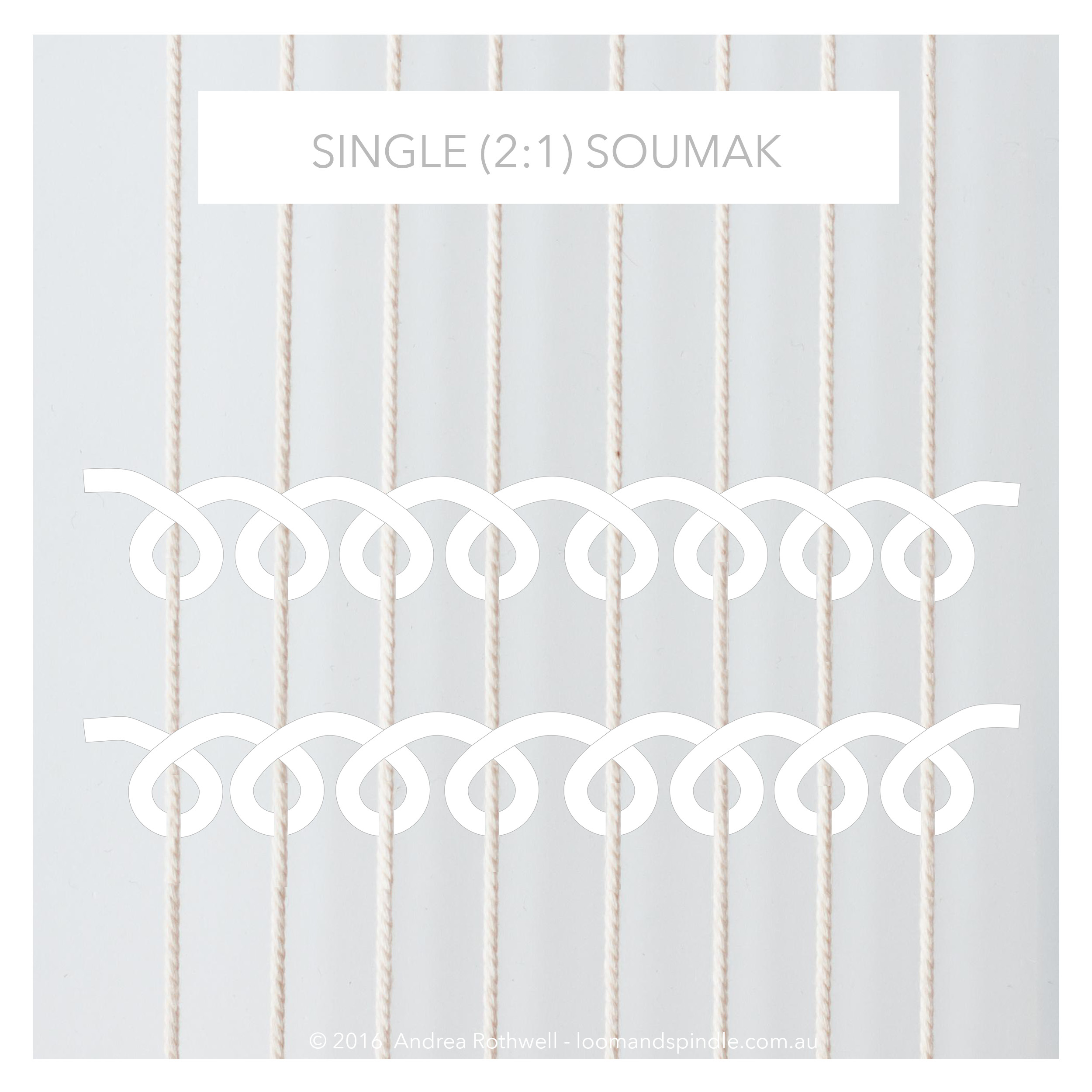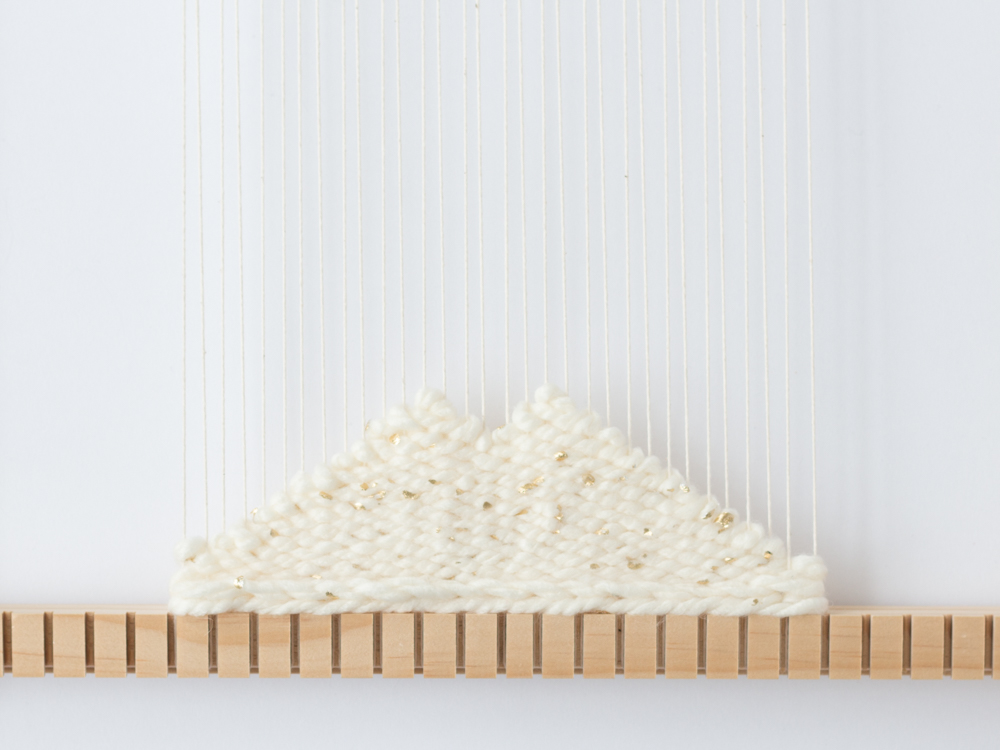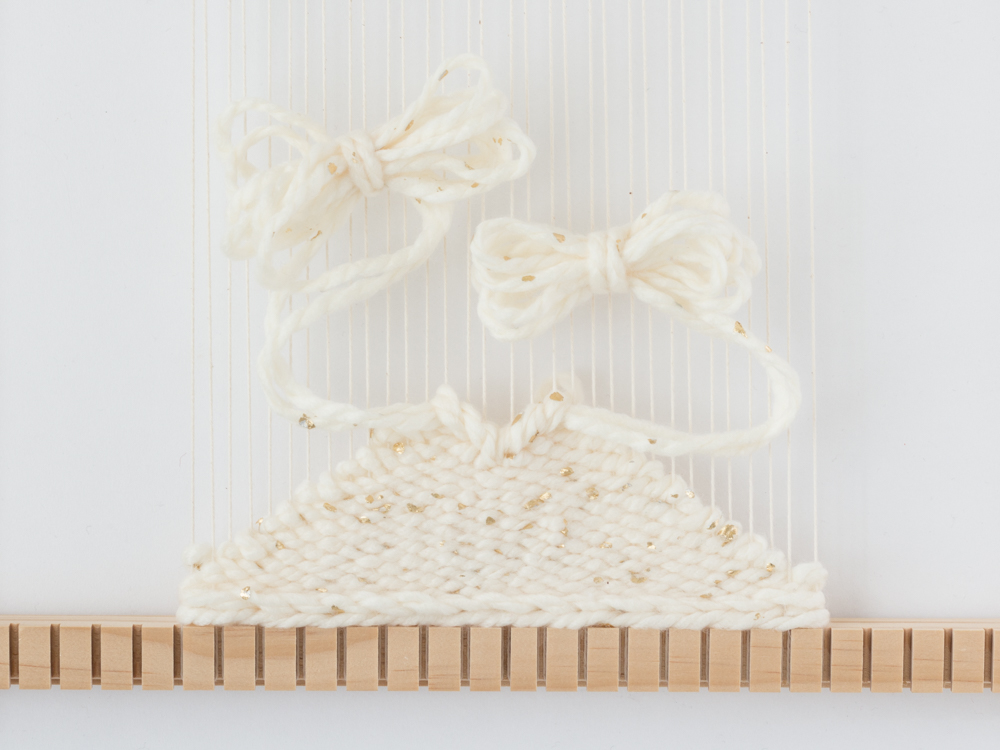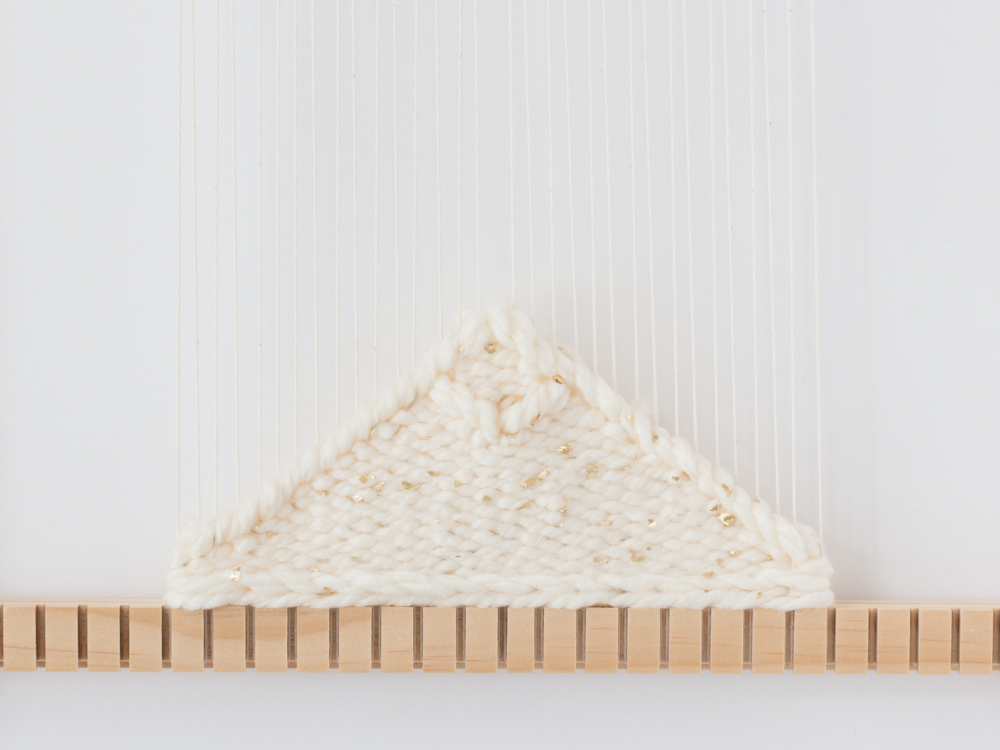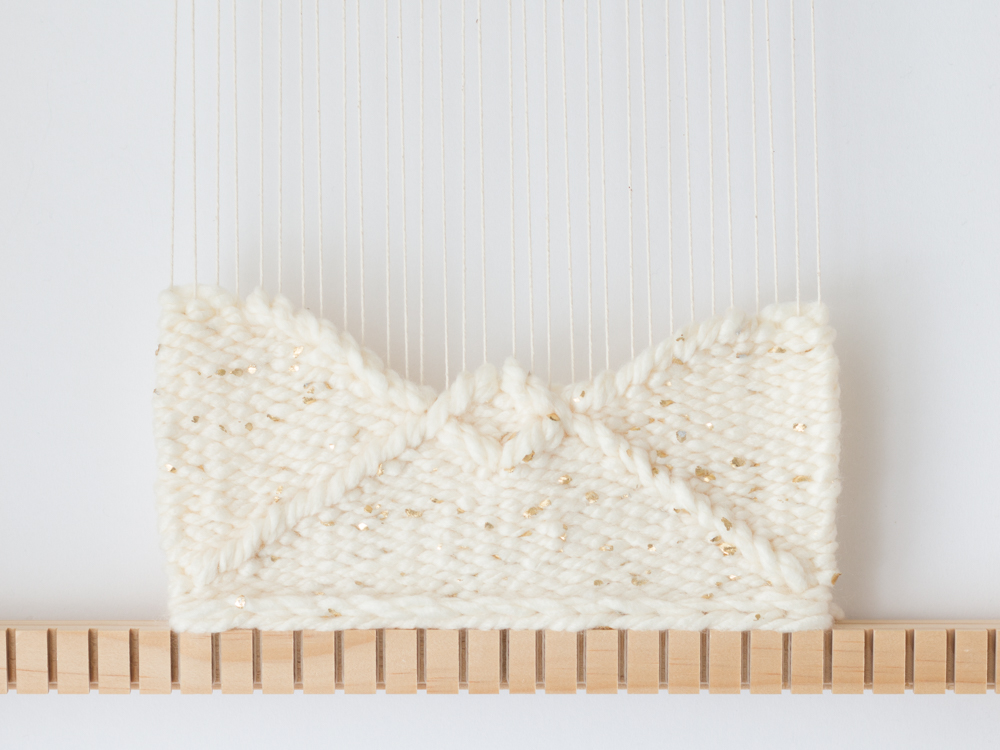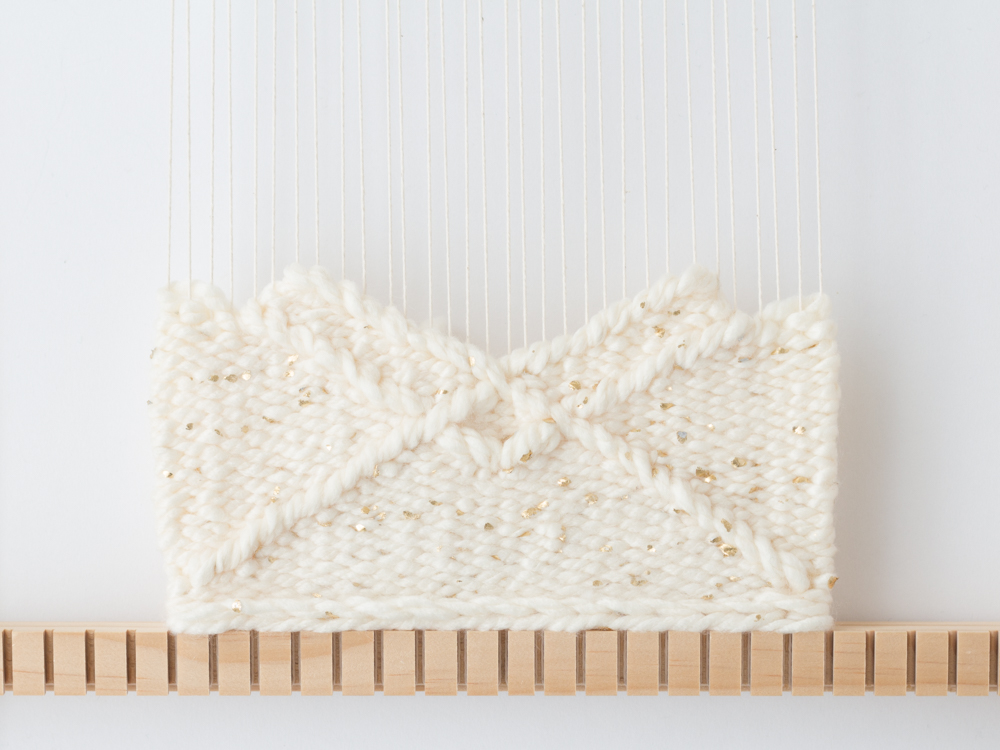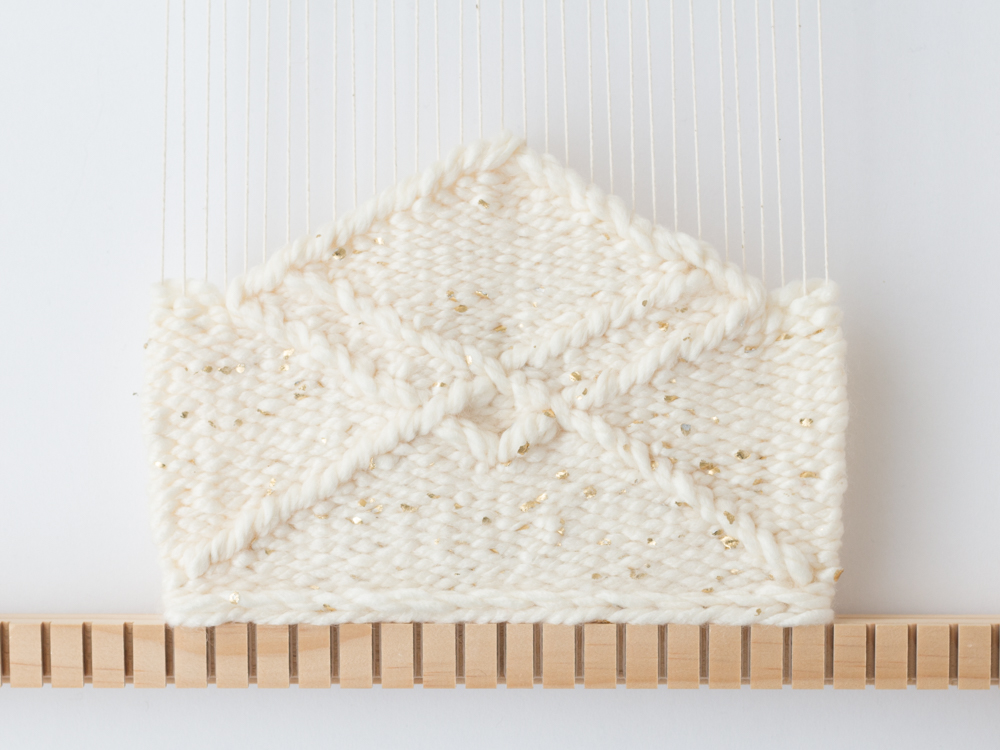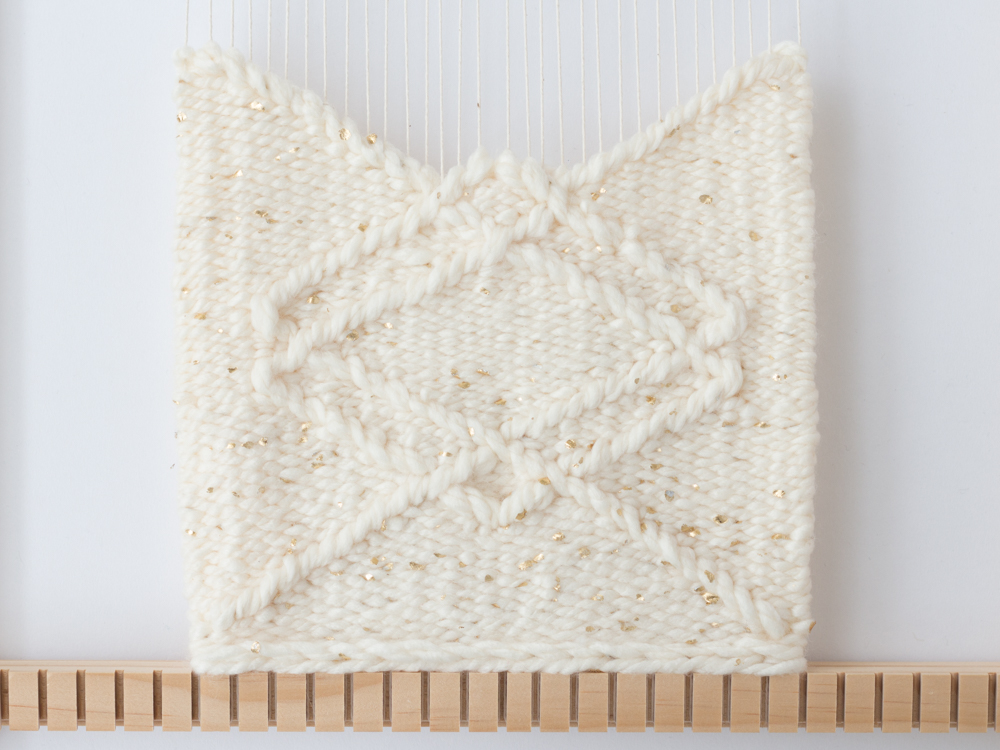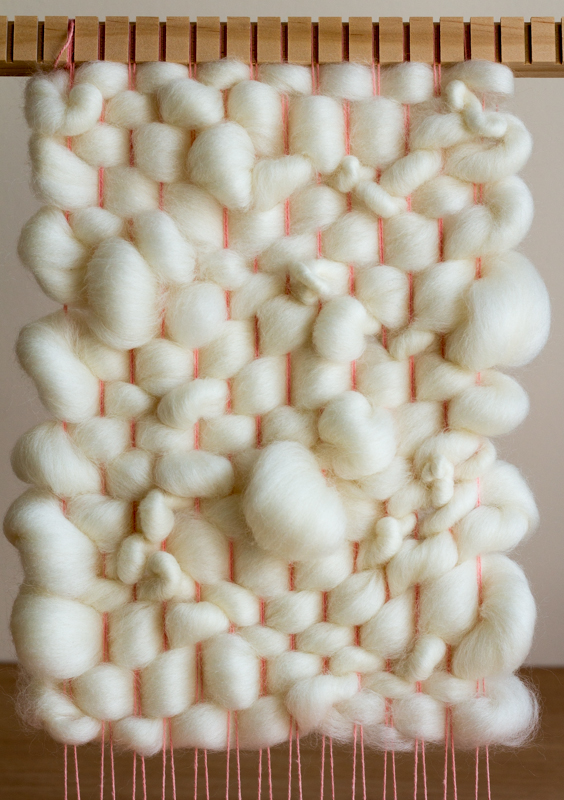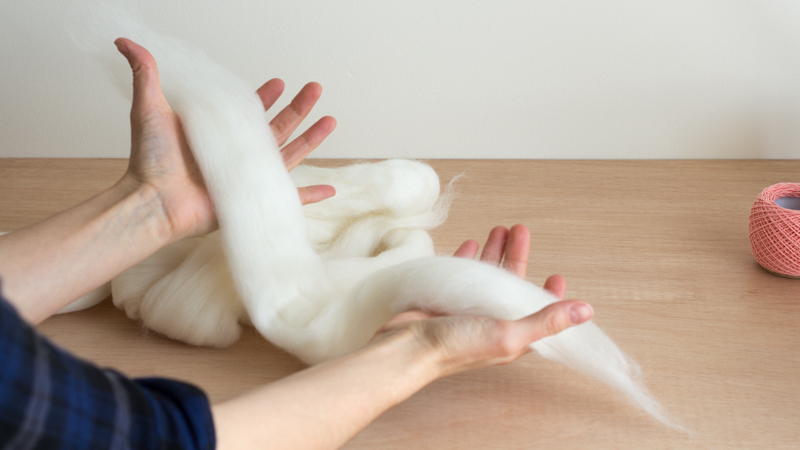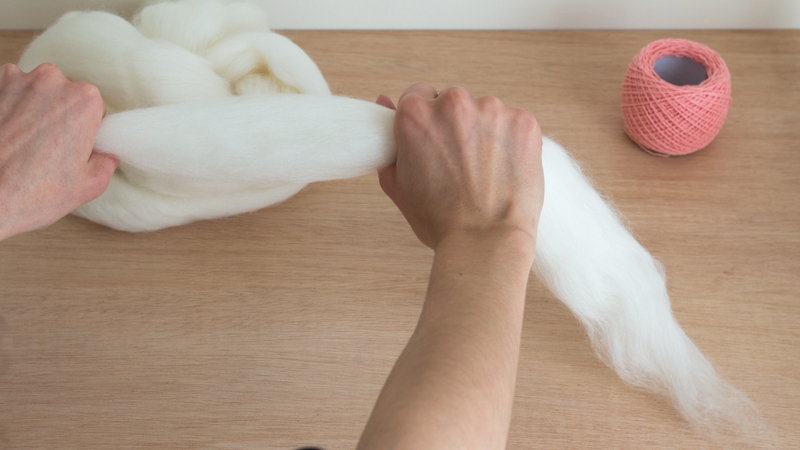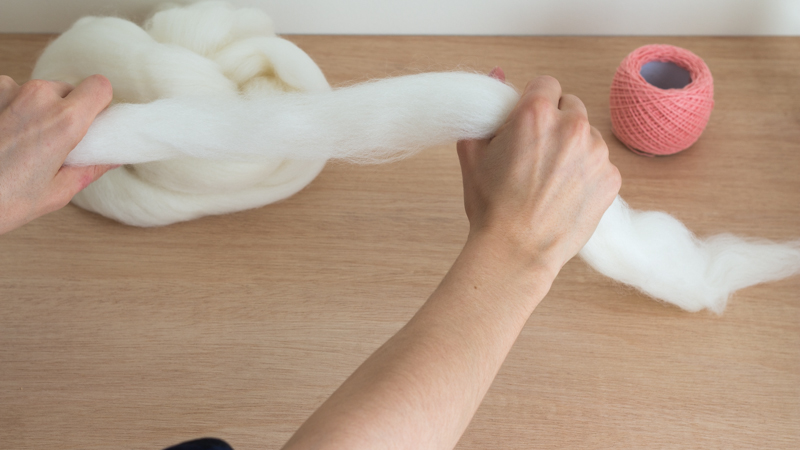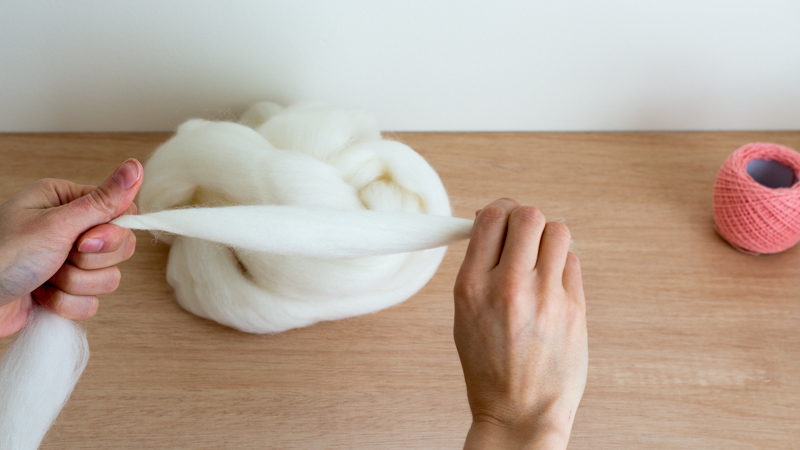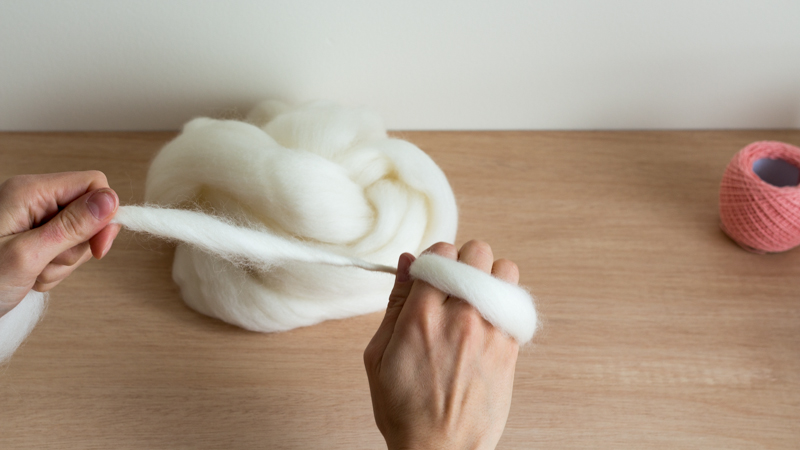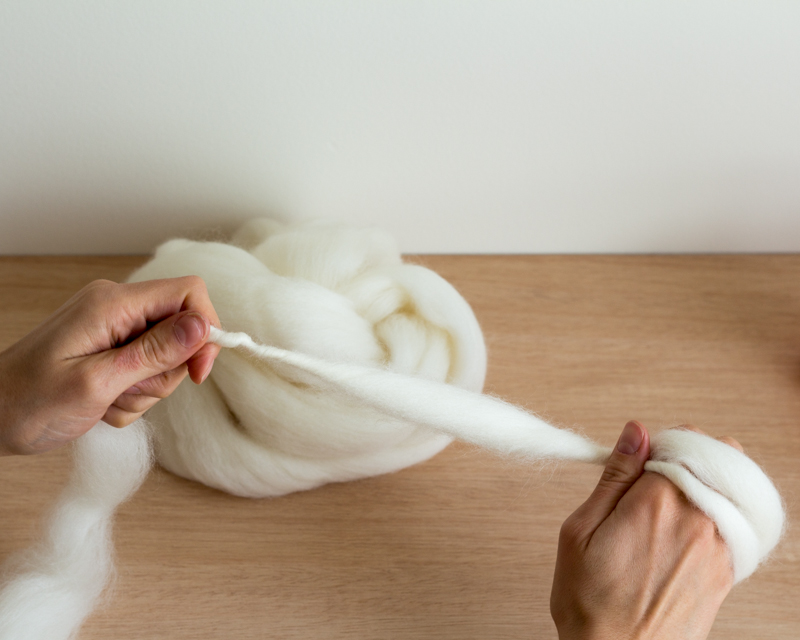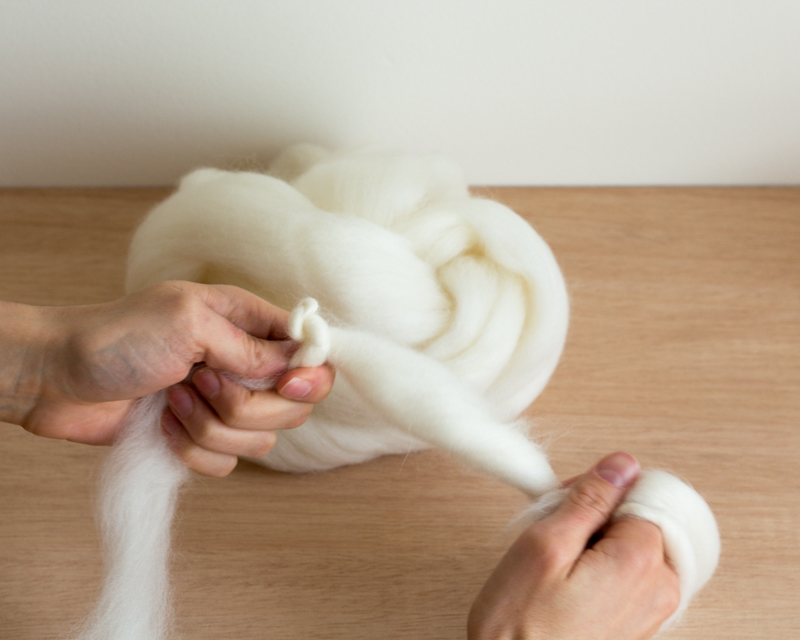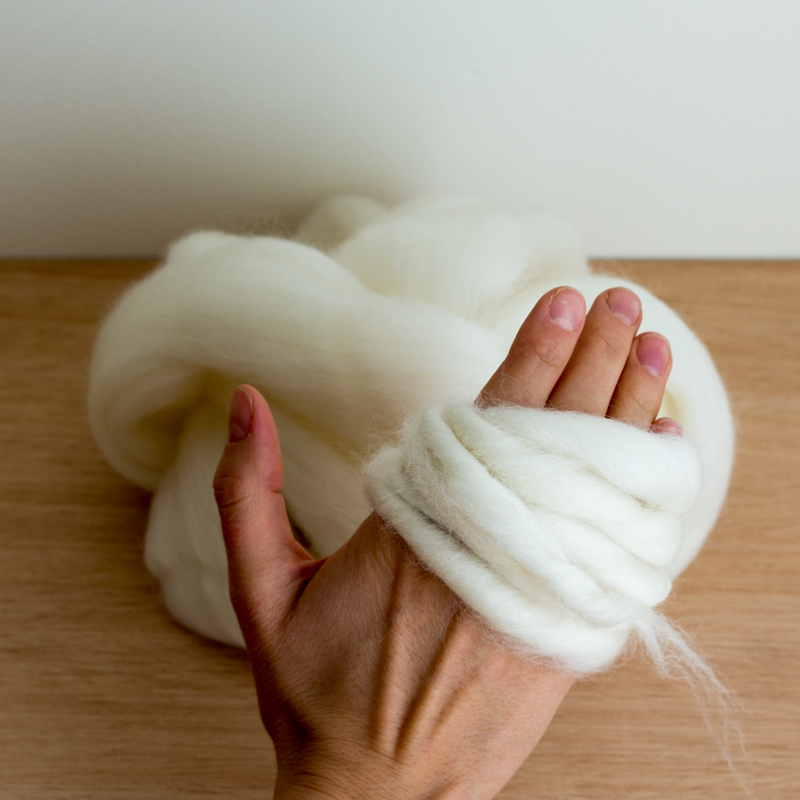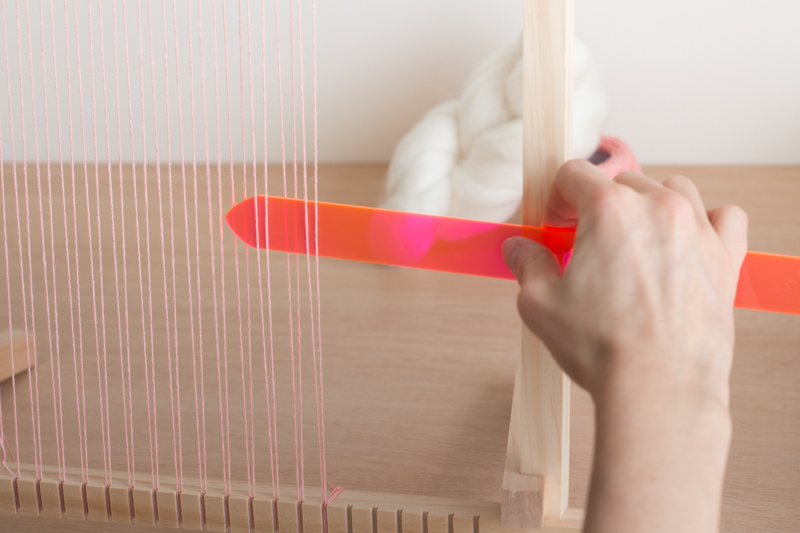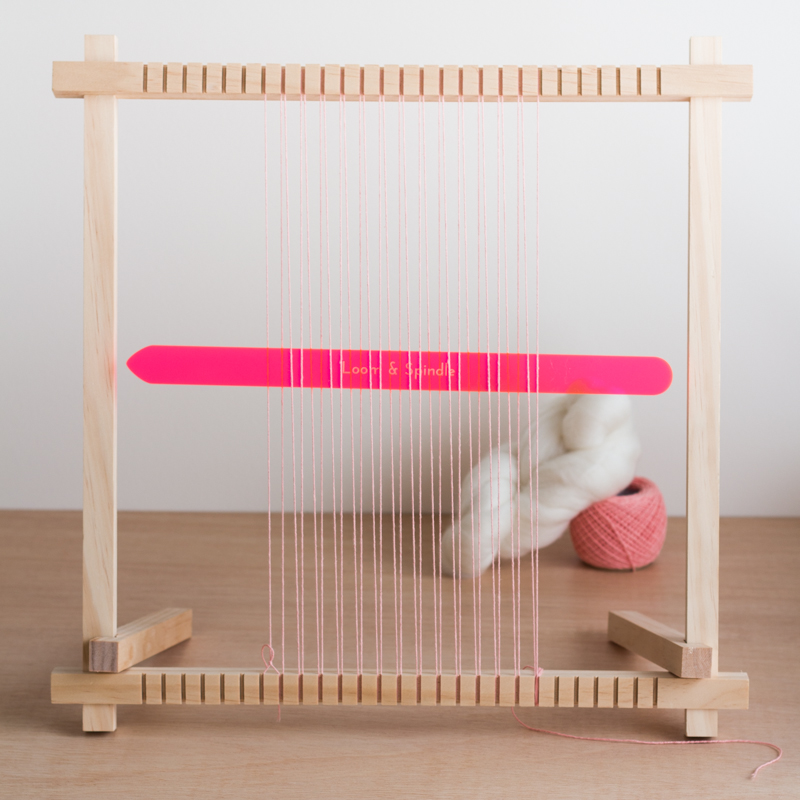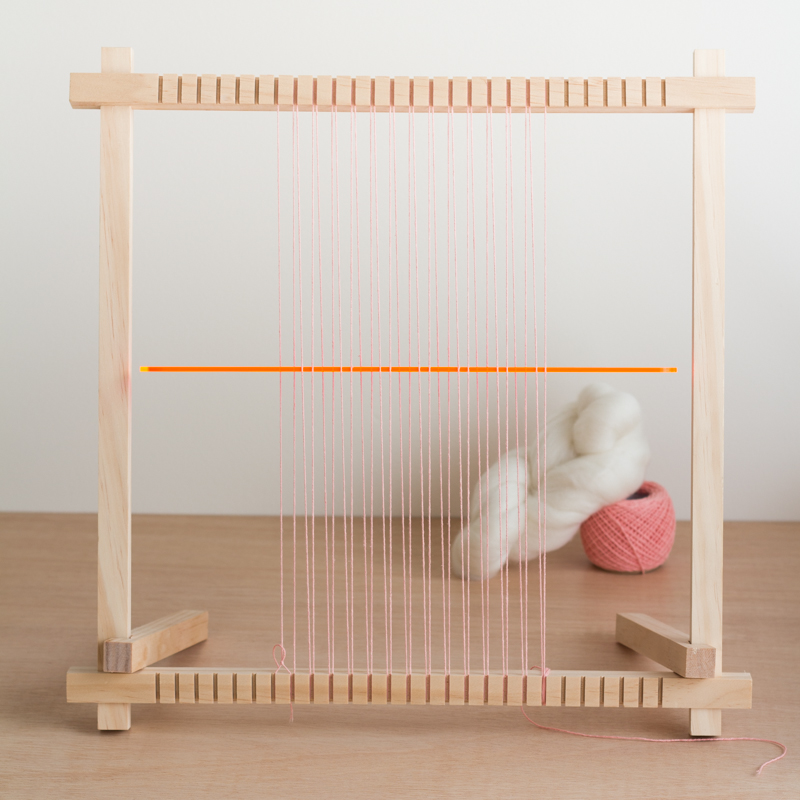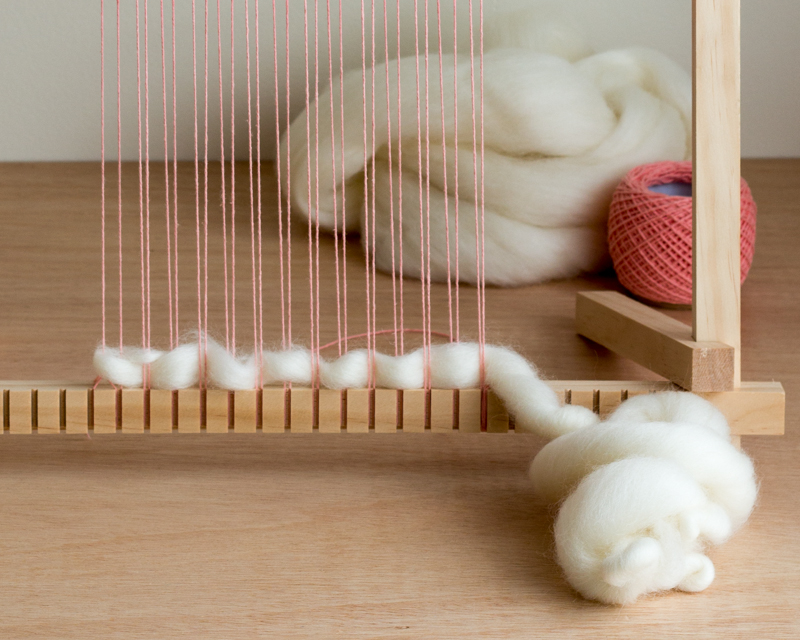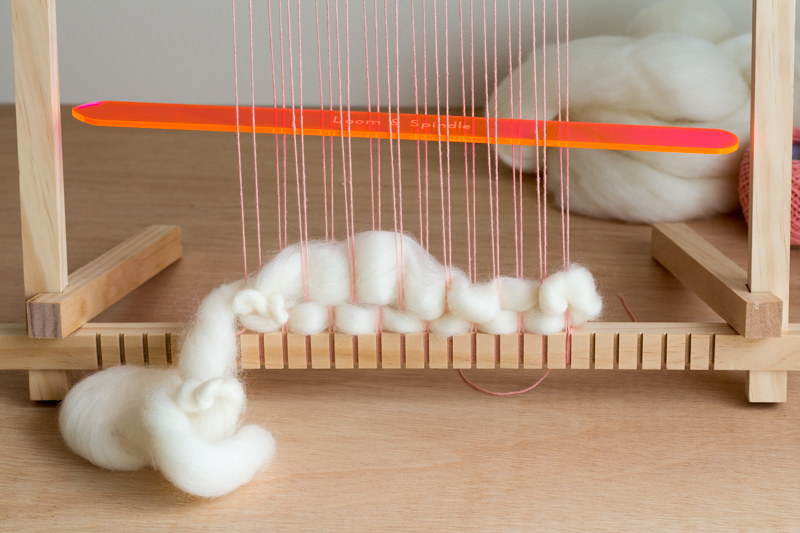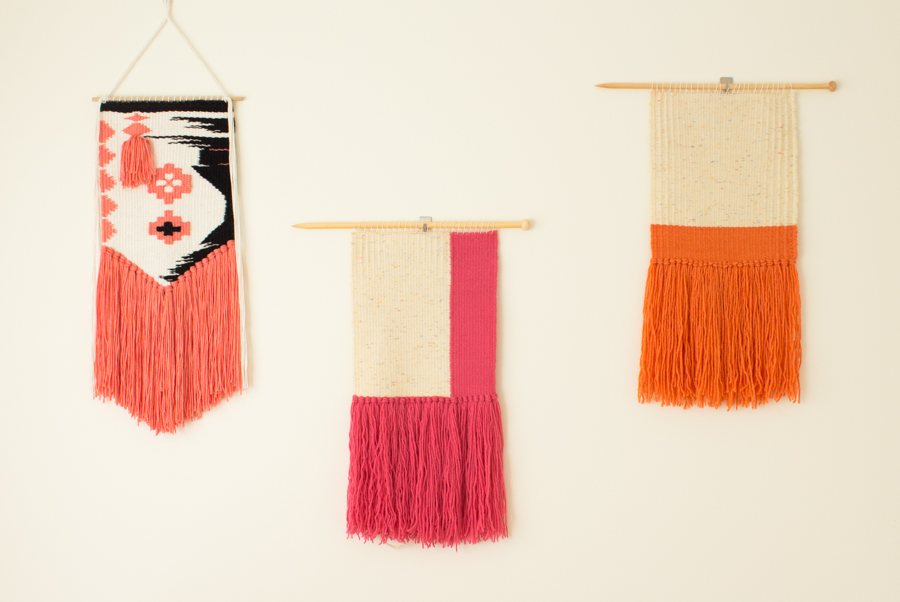As Valentine’s Day will soon be upon us, I was compelled to show you a method for weaving a woven heart.
A heart may seem complex at first, high and low stepping must be combined carefully to form both horizontal and vertical curving lines. Though, through careful planning this seemingly complex shape can easily be achieved.
I’ve outlined a simple foundation method for you below, it draws on the skills you’ve learnt in LINE SHAPE TEXTURE. You’ll also find a FREE heart template at the end of the post to get you started straight away.
Shaped weaving is a lot of fun. There are endless possibilities. I can’t wait to see how you incorporate this technique into your own pieces!
Project: Woven Ombré Heart
Intention
Construct a heart shaped woven piece to test a methodology for shaped weaving.
Gradually blend two colours across the surface of the fabric to produce an effect reminiscent of ombré – previously sampled here.
Skills
Inserting a ground weave – To prepare the loom and evenly space the warp prior to weaving
Double half-hitch - To secure the warp and weft
Plain weave – For the filling
Half-hitch - To secure weft threads as you start and finish a weft thread
Low and steep-angle stepping - To work horizontal and vertical curving lines
*To learn more about these skills and please check out my book - LINE SHAPE TEXTURE. It’s available to download now!
Planning
My first step was to define the shape and prepare a template. It was important to consider the warp sett and how best to plot the shape to achieve the centre-line points of the heart, would I use an odd or even number of warps and how would that affect the design.
I referred to my own notes in LINE SHAPE TEXTURE to refresh my skills on forming curved shapes. I noted in particular that curved shapes would work better over an even number of warp threads. Though, I concluded that an odd number of threads would be required to achieve the centre-line points. This led me to the assumption that if I pictured the heart as two overlapping circles that shared a common warp thread on their outer edge I could achieve both outcomes!
On drawing up the design, I sketched out the warp sett first. I marked the dimensions I wanted to work with ensuring that I marked an odd number of warp threads to align the shape.
Sampling
I wove a small sample heart, approximately 10cm (4’’) wide, to test the methodology and determine a procedure.
I tested the assumption that double-half hitches would be viable for securing the warp and weft, particularly its durability once the piece was removed from the loom.
I had previously tested weaving gradients of colour, swapping out two threads at a time. From this sampling, I decided to weave the gradient by swapping out one colour thread every couple of rows to see how this affected the gradient.
Materials
Frame Loom – I used a Loom & Spindle 44cm Loom with a pre-defined warp sett of 4 ends per 2.5cm (4 ends per inch)
Warp – Cotton Warp Thread
For the double half-hitches - I used three strands of a cream coloured sewing thread. This fine thread will help hide the hitches from view.
Weft - I chose a lace weight (2 ply) yarn in two neutral tones that were of similar contrast. I had used this yarn previously in my gradient samples so had a good idea of how they would behave when woven.
Colour 1: Morris Maya Lace Baby Alpaca, #3224 Erlicheer
Colour 2: Morris Maya Lace Baby Alpaca, #3201 Angelic
Method
STEP 1
Define the dimensions of your shape and warp the loom to a width that will accommodate your design.
STEP 2
Weave in a ground weave to establish a firm base on which to begin your piece, distribute the warp evenly.
STEP 3
Using a marker, trace your shape onto the warp. I have placed the heart shape upside-down.
Mark your centre thread so you have a reference point as you align your shape against the warp.
Orientate your shape so you have the fullest part of the design at the base. This provides a firmer and flatter base on which to weave, this will help you control the curves and establish that all important weave sequence.
STEP 4
Using three strands of sewing thread, about an arm’s length long, secure the warp by outlining the base of the shape with a series of double half-hitches.
Work steadily and carefully, maintaining the warp spacing.
Ensure the hitches are secure by tying the double half-hitches tightly on each warp thread.
Keeping the tension on the sewing thread as you work the double half-hitches will help control the positioning the hitch.
STEP 5
Using plain weave or other desired stitch, fill in the body of the shape working your passes and stepping the weft as the shape requires.
If using plain weave, weft direction can be utilised to maintain weave sequence to create a seamless appearance on the face of the fabric.
In my piece, I began by weaving-in the base of each horizontal curve. I wove each side as if they were a mirror image. This ensured my weft threads would be travelling in opposite directions, very important when working adjacent shapes.
I had to play around with the passes to figure out how to bring the wefts together seamlessly. I found that if I kept the passes on one side lower than the other I was then able to bring the weft over from the right side and pass seamlessly over the left side of the shape. Play around with it and you should be able to find the sweet spot on your piece too.
STEP 6
Once the shape is complete secure the warp and weft by outlining the shape with a series of double half-hitches. The piece is now ready to cut from the loom.
Finishing
The warp and weft ends can be secured against the back of the piece using a sewing needle and thread. I found that by incorporating some hitches into the sewing stitches I could grip the warp threads and anchor them down more firmly.
As there is not a lot of natural spring in alpaca fibre and the yarn is quite dense, I didn’t feel the need to steam block the pieces in this instance.
Insights and Opportunities
Sampling the project and working through the challenges this piece presented helped reinforce the theory behind weaving curved shapes.
The method proved very versatile and I can see that it has endless opportunity for further experimentation!
Thank you for reading!
I’ve put together a template so you can try this technique for yourself.
The template contains three heart sizes and features positioning points for the outer warp threads.
This will help you align and orientate your template for best results!
















